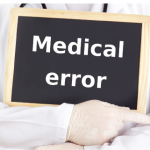(Reuters Health)—Parents often catch medical errors that their child’s doctor missed, according to a U.S. study that suggests families may be an untapped resource for improving hospital safety and preventing mistakes.
Roughly one in 10 parents spotted mistakes that physicians did not, according to the study of safety incidents observed on two pediatrics units at a hospital in Boston.
“Parents may notice different things than healthcare providers do, and thereby provide complementary information that can only help make care safer,” said lead study author Dr. Alisa Khan, a pediatrics researcher at Harvard Medical School and Boston Children’s Hospital.
“As anyone who has ever been hospitalized knows, hospitals are very complex places where there are a lot of moving parts, and errors are bound to happen despite all of our best efforts,” Khan added by email. “I think we—including parents—can all work together to keep children safe.”
To assess how frequently parents detect mistakes that doctors didn’t catch, Khan and colleagues reviewed data on 383 kids hospitalized in 2013 and 2014.
Parents completed written surveys detailing any safety incidents their children experienced during their hospital stays.
Then, two physician reviewers classified incidents as medical errors, other quality issues, or situations that weren’t safety problems.
Overall, 34 parents (8.9%) reported 37 safety incidents, the researchers report in JAMA Pediatrics, online on Feb. 29.
When doctors reviewed these incidents, they found 62% (23 of the cases) were medical mistakes. Another 24% (nine situations) involved other quality issues. The remaining 14% (five cases) were neither mistakes nor quality problems, the physician reviewers concluded.
For the subset of cases that were medical mistakes, the reviewers found 30% of the incidents caused harm and were preventable.
Children with medical errors appeared to have longer hospital stays, and these kids were more likely than others in the study to have either metabolic or neuromuscular conditions.
Preventable errors described by parents included delays detecting a foreign body left behind after a procedure, recognition and treatment of urinary retention, and receipt of pain medication.
In one case, a poorly dressed wound got contaminated with stool, while in another instance, a child got an infection from an unused intravenous catheter.
Parents identified communication problems as a contributing factor in a number of errors, including instances when day and night staff didn’t note a medication change and when written information for one patient was documented in a different patient’s medical record.



